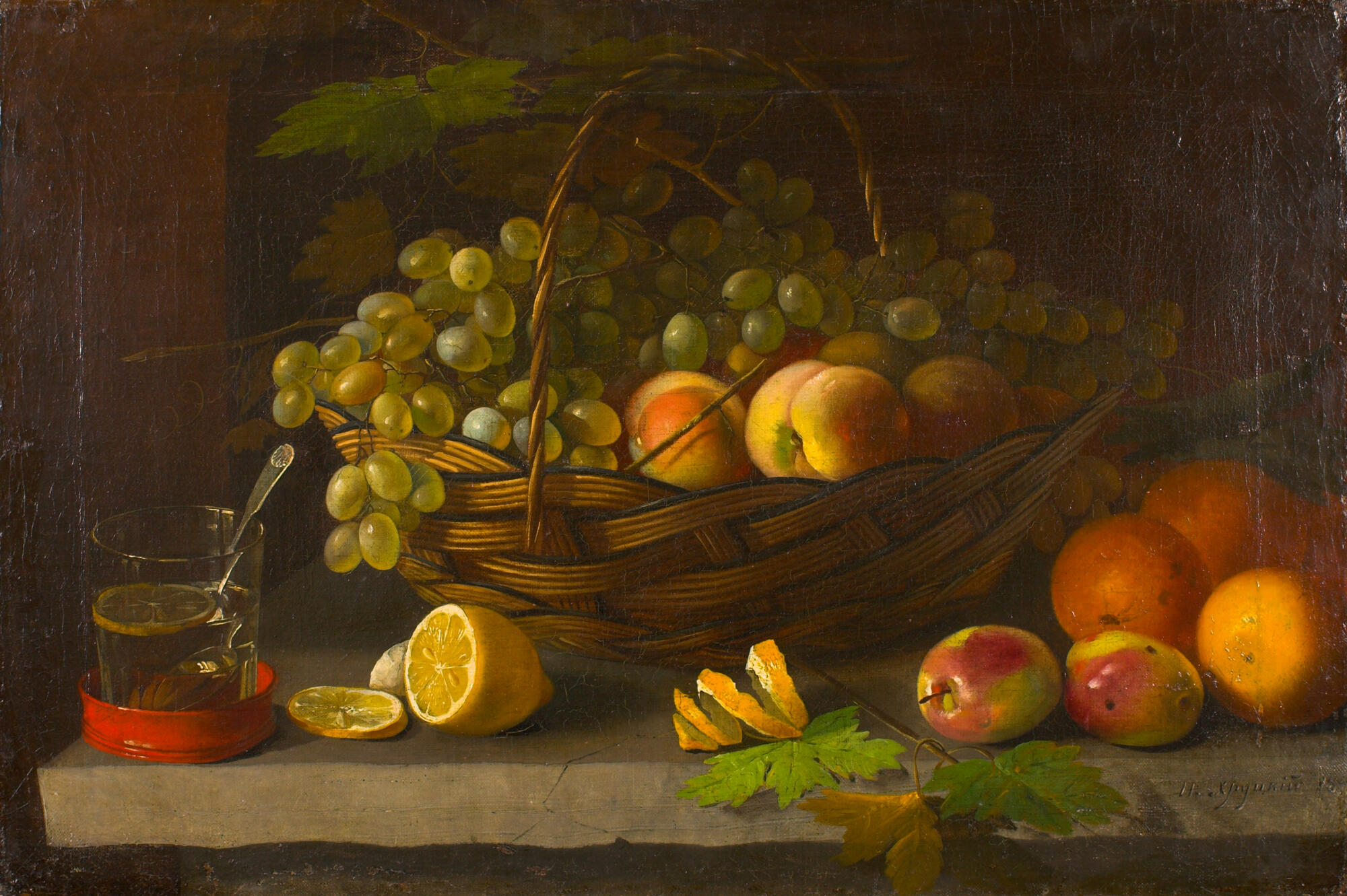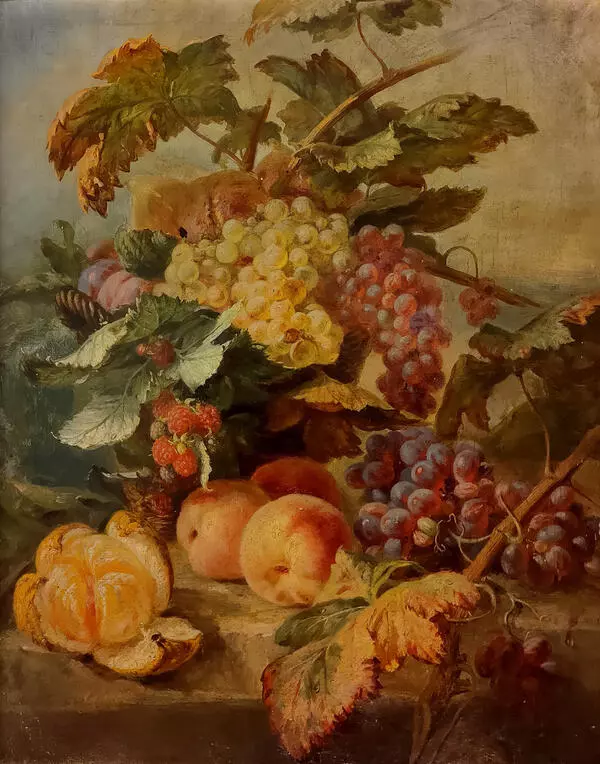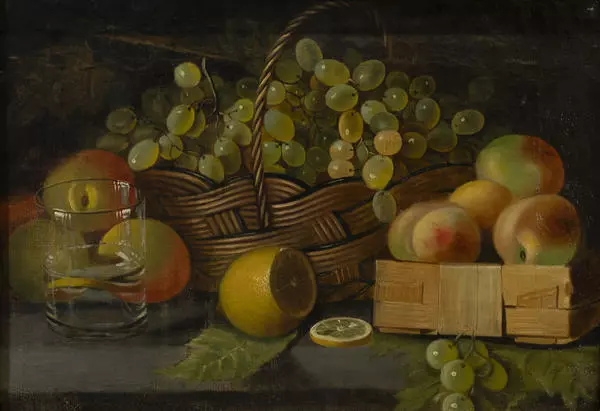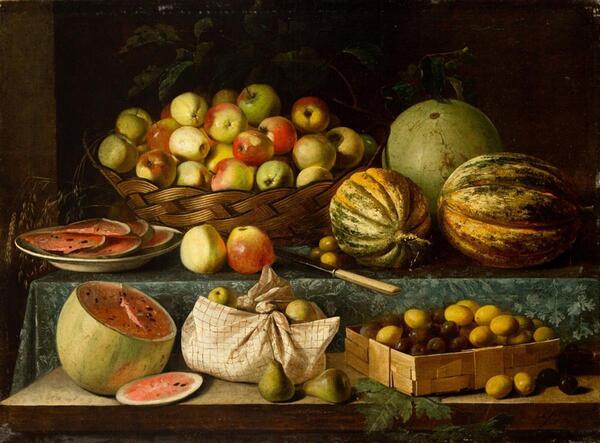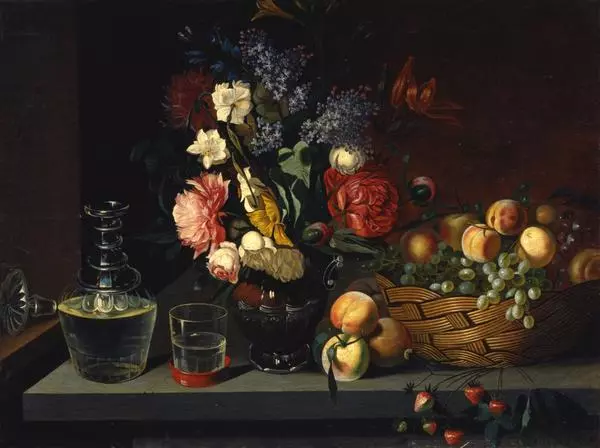Ivan Khrutsky is known as an artist who worked in the traditions of the Russian academic art school. He painted naturalistic still life pictures which were popular among his most wealthy contemporaries.
Ivan Khrutskiy was born in the Vitebsk region in the family of a Greek and Catholic priest. At the age of 17, he came to Saint Petersburg, where he studied at the Academy of Arts as a non-credit student. Then he was enrolled to the Academy and became a legitimate student. Khrutskiy’s teachers were famous masters: Alexander Varnek, Maxim Vorobyov, Karl Bryullov, Feodor Bruni. The Academy Council highly appreciated Ivan Khrutskiy’s still life pictures: in 1836, he was awarded a large silver medal. In the same year, he was awarded the title of free artist.
The first sketches of the artist were: ‘Still Life with a vase’ and ‘Still life with a bird’ and they are dated baack to 1832. During this period, Khrutskiy already worked a lot on still life pictures. Initially he did simple paintings that consisted of several items, and then moved on to larger artworks with a complicated composition that combined a wide variety of vegetables, fruits and flowers.
In 1840, the painter’s father died. Khrutskiy left Saint-Petersburg. He bought the Zakharnichi estate near Polotsk and lived there for the rest of his life. He never went out of his estate, the only exception was the request from the Lithuanian Metropolitan Joseph Semashko: he wanted Khrutskiy to paint iconostases for the churches in Vilno and Kovno, and to paint portraits of clergy, as well as views of Vilno and its surroundings for the Metropolitan’s city and country manors.
Ivan Khrutskiy’s painting style was strongly influenced by Dutch and Flemish masters — with exotic fruits and fine dishes, with a darkened background and foreground that is flooded with warm and soft light. The artist carefully worked on the texture of each item: the smooth skin of the apple, a wet slice of the lemon, the velvet peel of a peach, their density, weight, softness, smoothness. This effect was achieved by a special smoothed technique — glazing — this means that deep iridescent colors are achieved by applying translucent paints over the main color. Lighting also plays an important role: it imitates the natural light pouring onto the table.
Ivan Khrutskiy was born in the Vitebsk region in the family of a Greek and Catholic priest. At the age of 17, he came to Saint Petersburg, where he studied at the Academy of Arts as a non-credit student. Then he was enrolled to the Academy and became a legitimate student. Khrutskiy’s teachers were famous masters: Alexander Varnek, Maxim Vorobyov, Karl Bryullov, Feodor Bruni. The Academy Council highly appreciated Ivan Khrutskiy’s still life pictures: in 1836, he was awarded a large silver medal. In the same year, he was awarded the title of free artist.
The first sketches of the artist were: ‘Still Life with a vase’ and ‘Still life with a bird’ and they are dated baack to 1832. During this period, Khrutskiy already worked a lot on still life pictures. Initially he did simple paintings that consisted of several items, and then moved on to larger artworks with a complicated composition that combined a wide variety of vegetables, fruits and flowers.
In 1840, the painter’s father died. Khrutskiy left Saint-Petersburg. He bought the Zakharnichi estate near Polotsk and lived there for the rest of his life. He never went out of his estate, the only exception was the request from the Lithuanian Metropolitan Joseph Semashko: he wanted Khrutskiy to paint iconostases for the churches in Vilno and Kovno, and to paint portraits of clergy, as well as views of Vilno and its surroundings for the Metropolitan’s city and country manors.
Ivan Khrutskiy’s painting style was strongly influenced by Dutch and Flemish masters — with exotic fruits and fine dishes, with a darkened background and foreground that is flooded with warm and soft light. The artist carefully worked on the texture of each item: the smooth skin of the apple, a wet slice of the lemon, the velvet peel of a peach, their density, weight, softness, smoothness. This effect was achieved by a special smoothed technique — glazing — this means that deep iridescent colors are achieved by applying translucent paints over the main color. Lighting also plays an important role: it imitates the natural light pouring onto the table.
